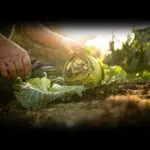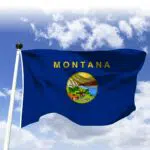Drinking Water Week takes place during the first week in May — from May 3 to 9 this year. In our daily lives, we drink water without thinking about where it is coming from and if it is safe for us. Polluted drinking water can be responsible for many illnesses, which is why awareness is so important. Sponsored by the American Water Works Association, Drinking Water Week helps us think about the significant role that safe drinking water plays in keeping us healthy. It also makes us realize the importance of being aware of whether our water is safe or not.
History of Drinking Water Week
People have been storing and distributing drinking water since the beginning of time. During the hunter-gatherer period of human civilization, river water was used as drinking water, and so civilizations were usually formed near that water source. In case there were no rivers or lakes, they used groundwater for drinking water, which was pumped up through wells. When the human population started growing extensively, the water supply was no longer sufficient, and drinking water needed to be extracted from a different source.
About 7,000 years ago, river water and water in wells were used as drinking water sources. People also developed drinking water transport systems, namely through channels that were dug in the sand or rocks. Gradually, people shifted to hollow tubes for the channels. Egypt used hollow palm trees, and the Chinese and Japanese used bamboo trunks. Eventually, humans used other materials like clay, wood, and metal.
In 1804, John Gibb built the first drinking water system that supplied an entire city in Paisley, Scotland, with disinfected water. Within three years, filtered water was able to be transported to Glasgow. In 1806, Paris established a large water treatment plant. The water was settled for 12 hours, after which they filtered it using sand and charcoal. In 1829, the Englishman, James Simpson, invented a sand filter for the purification of drinking water. This helped improve public health immensely.
U.S. drinking water supplies are said to be amongst the safest in the world currently. In 1908, Jersey City in New Jersey was the first city in the U.S. to start the practice of routine disinfection of community drinking water. Over the next decade, many other U.S. cities and towns followed suit in routinely disinfecting their drinking water.
Drinking Water Week timeline
River water and water in wells are used as drinking water sources.
John Gibb supplies disinfected water to an entire city through his water supply system.
Englishman James Simpson invents a sand filter for the purification of drinking water, which helps improve public health immensely.
Jersey City is the first city in the U.S. to start the practice of routine disinfection of community drinking water, which other cities soon adopt.
Drinking Water Week FAQs
What are the signs of drinking too much water?
If you are vomiting, have a headache, or are feeling nauseated.
How much water should you drink a day?
The U.S. National Academies of Sciences, Engineering, and Medicine stated that men should drink about 15.5 cups of water every day. For women, it is about 11.5 cups per day.
Is drinking a lot of water good for your kidneys?
Yes, it is. Drinking water helps your kidneys remove waste from your blood, and that waste comes out as urine.
.
How to Observe Drinking Water Week
Stay hydrated
Our body is mostly made up of water. If you don’t drink enough water every day, it can lead to various illnesses.
Enquire about your local drinking water system
Curious about how safe your drinking water is? The best way to find out is to learn about the workings of your community water system and see what methods of disinfection and filtration they follow.
Raise awareness
The more the merrier. Use this week to spread useful and critical information about the safe consumption of water by talking to friends or using online channels.
5 Interesting Facts About Drinking Water
Most Americans use public water systems
Almost 300 million Americans source their drinking water from public water systems.
Fluoride in tap water helps prevent cavities
Fluoride, a salt compound found in most drinking water systems, helps prevent cavities.
Quality checks in the U.S.
The U.S. Environmental Protection Agency asks all those involved in community water systems within the country to provide drinking water quality reports to its customers every year.
Americans drink a lot of water
A study stated that Americans drink over a billion glasses of tap water every day.
Sanitation of drinking water can reduce diseases
According to reports, schistosomiasis and guinea worm disease can be reduced by 80% if drinking water is properly sanitized and hygienic.
Why Drinking Water Week is Important
It improves the quality of life
Drinking enough water every day not only helps quench our thirst but also actively upgrades our quality of life. It makes our skin glow and helps us feel energetic.
It helps us take better care of our bodies
Our body needs water to carry out several of its functions. We will only be able to thrive if we provide it with enough water.
To stay informed
It’s important to stay informed about where we are getting our drinking water from so that we can make sure that what we are consuming is hygienic and safe. It’s also important to share that information with communities that may not have access.
Drinking Water Week dates
| Year | Date | Day |
|---|---|---|
| 2024 | May 5–11 | Sunday–Saturday |
| 2025 | May 4–10 | Sunday–Saturday |
| 2026 | May 3–9 | Sunday–Saturday |






































